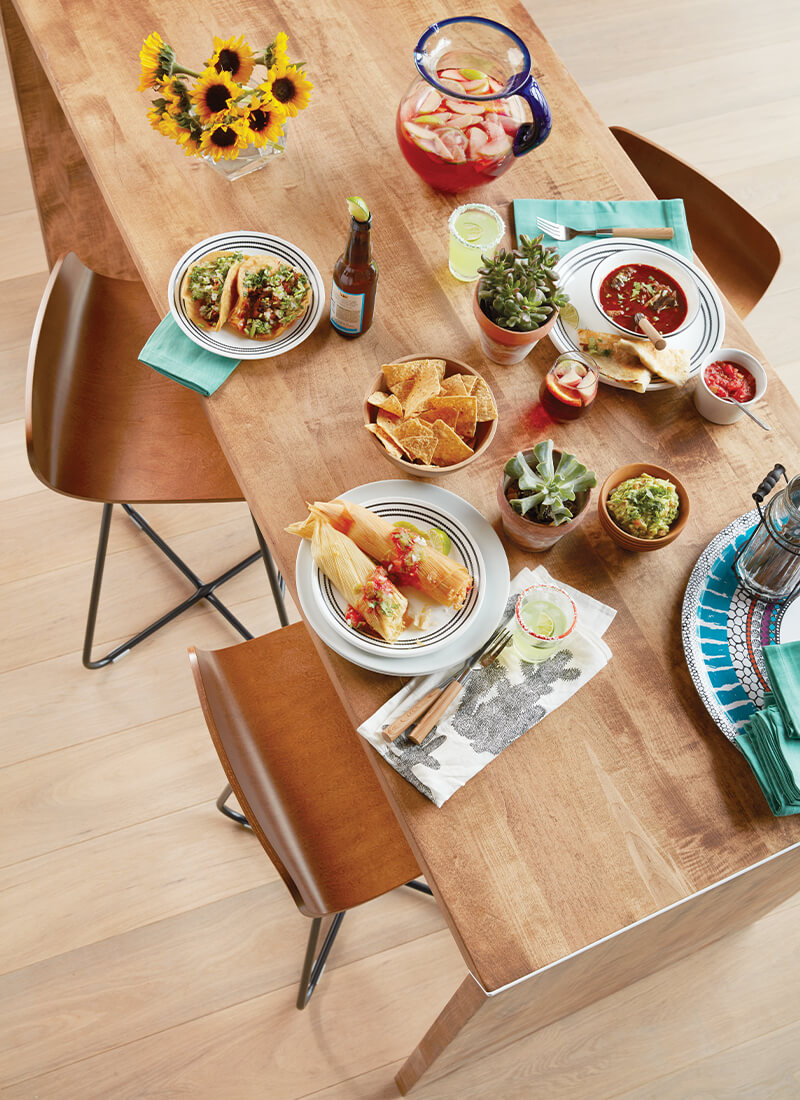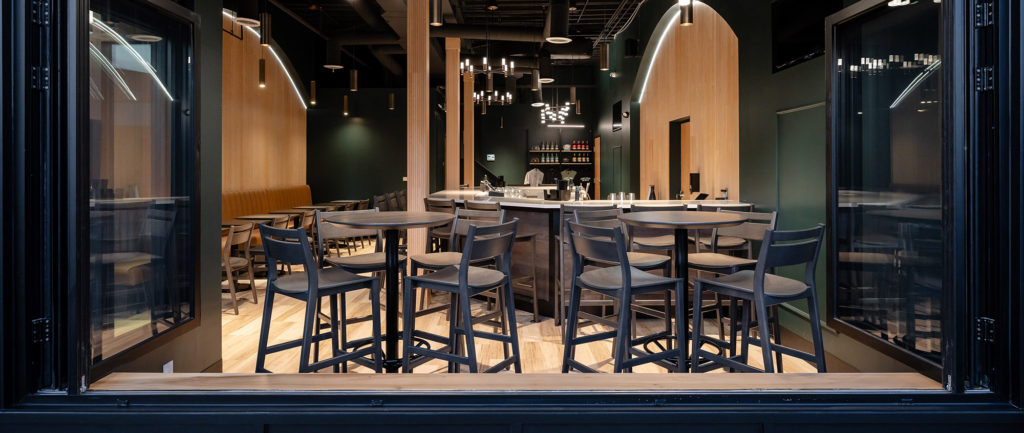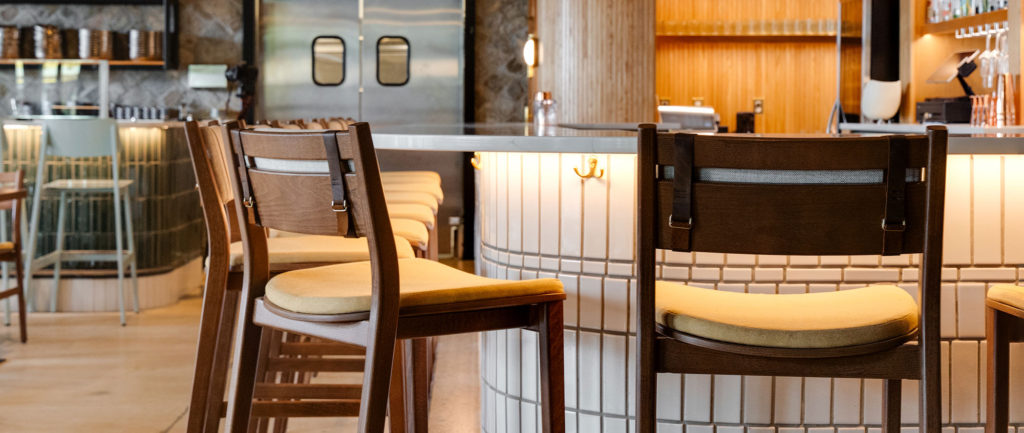Which Table Is Right For you?
Find the right table for you by exploring the pro’s and con’s of popular restaurant table shapes.
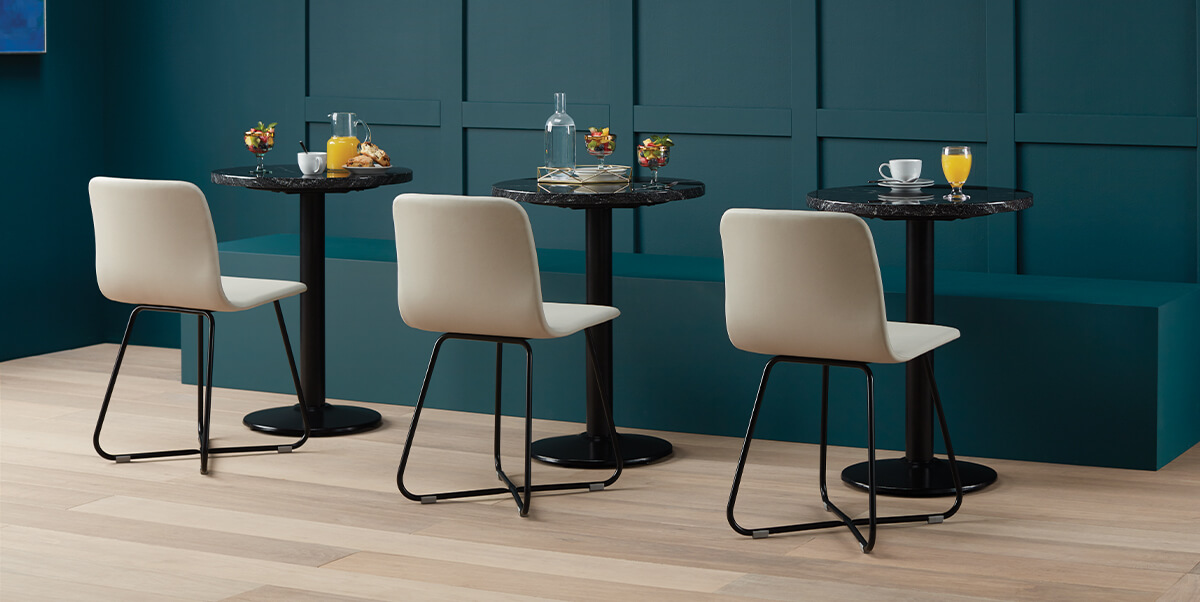
There are many decisions that accompany the redesign or opening of a restaurant. One of those decisions is what type of dining tables you will use in your restaurant to maximize your space and set the right design tone.
We want to help make this selection process easier by identifying the pro’s and con’s of some of the more popular restaurant table shapes.
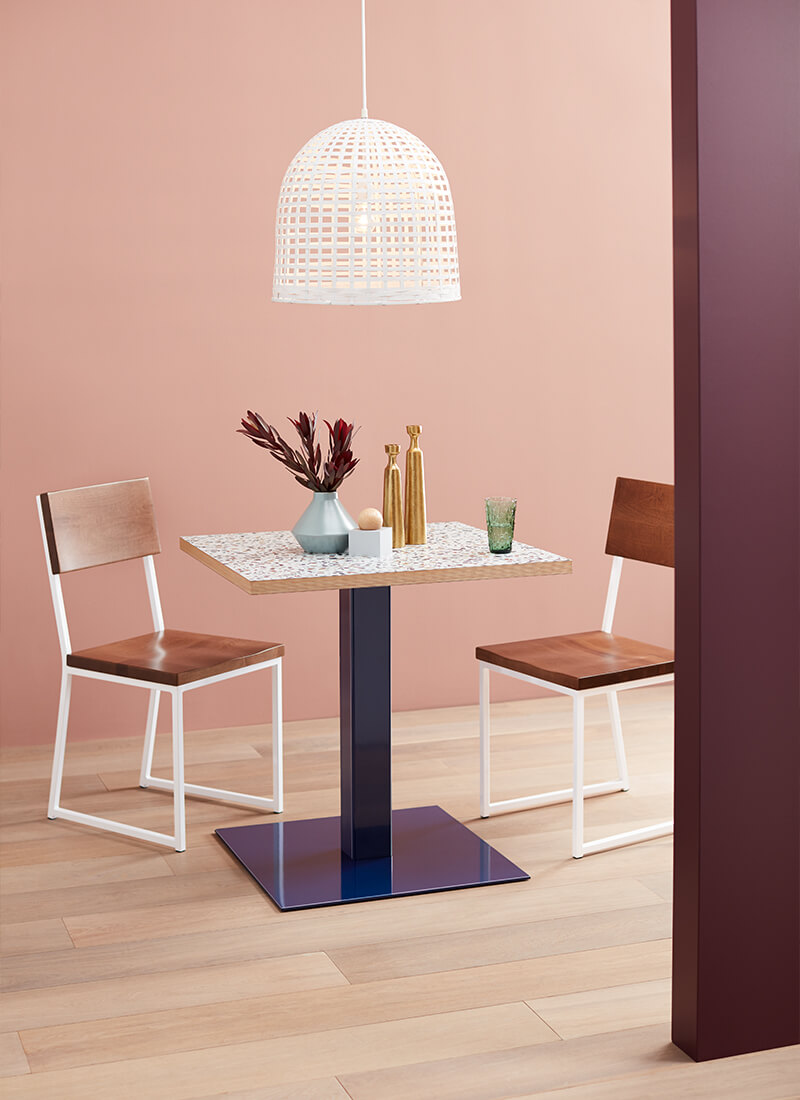
Square Tables
Pro: A square or rectangular table is often the most popular choice for restaurants because it offers the most flexibility. Square tables like our Brady Pedestal table can easily go against a wall, slide into a corner, or float in the center of a room. Rectangle or square tables are convenient for larger groups as they can be pushed together to accommodate additional guests.
Be sure to consider the feel of the environment you want your space to communicate. Square tables are typically associated with a full service restaurant as they easily create sleek lines and a feeling of intimacy.
Con: Square tables don’t typically work well in rectangular spaces and can make it harder for patrons and staff to move freely around the establishment.
Round Tables
Pro: Round tables are ideal in a more casual environment and often used in fast food chains where diners will simply be eating and leaving. A round table creates a friendly and warm environment, not to mention the lack of sharp corners make this shape kid-friendly.
A small, round table top paired with a round base, like Cassandra, is a great choice for an environment that might invite more single diners, like a coffee shop or bakery.
Keep in mind a large round table can be ideal for large parties because they allow for eye contact and easier conversation than a long, rectangular table might.
Con: Round tables are often only ideal for single patrons or large parties and can make accommodating two or three diners a bit odd or uncomfortable.
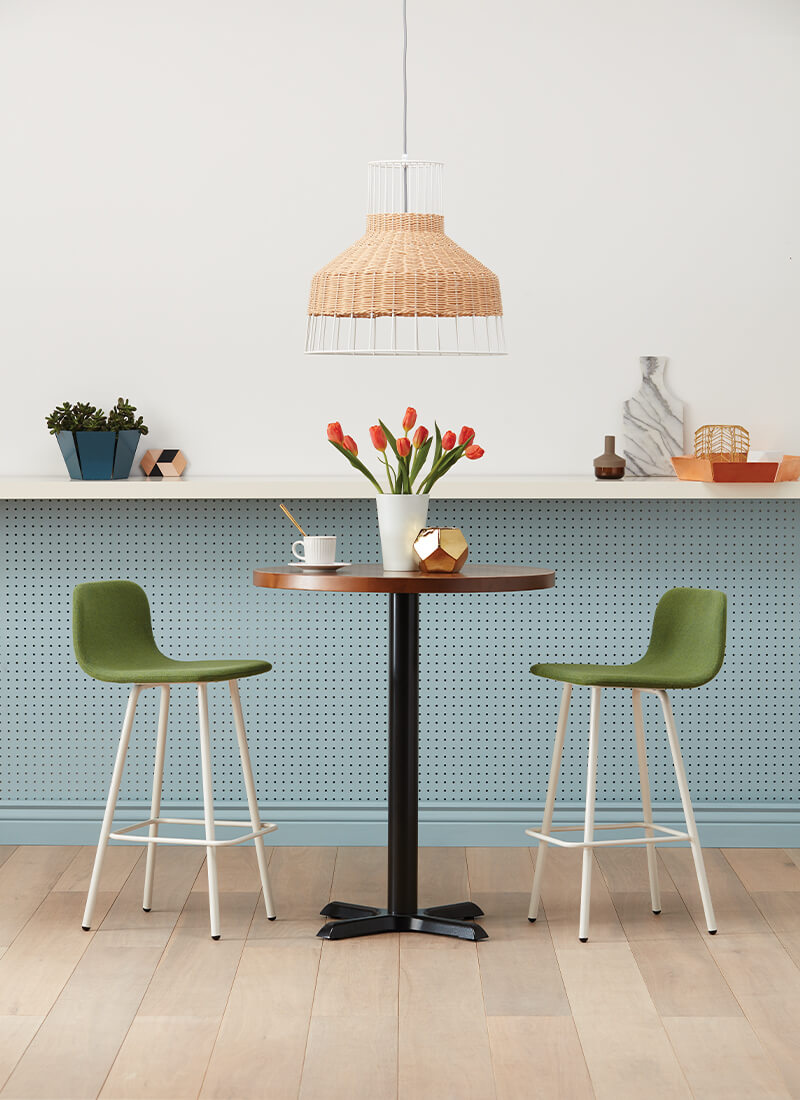
Communal Tables
Pro: Communal tables are becoming more and more popular as the social scene changes and restaurants become smaller and spaces become trickier to work with.
Offering a communal table, like our Dylan, can be a great choice if you have limited space and know your diners love to get to know new people, but you better be sure you have some other seating options for those who are seeking a more traditional meal. Communal seating creates a unique and social experience and can be a great money saver in an industry where all types of factory and store spaces are being refurbished and turned into restaurants.
Con: Many people are still a bit taken back by the thought of sharing their dining space so closely with strangers, and if there’s no other alternative, they may choose to dine elsewhere.
Mix It Up
Today, in a world where most dining is considered “casual” and customers want a laid-back, social setting, the best approach may end up being a balance of all three types of tables.
Picture it: those who want to stand and socialize can gather around a communal table, all while round, corner tables can offer other diners more privacy. Additionally, some larger, square tables could accommodate any larger parties.
Just remember, your dining tables don’t just offer a place for your customers to sit, they contribute to the tone and overall experience your establishment offers. The right table will play a very important role in setting that perfect tone.
